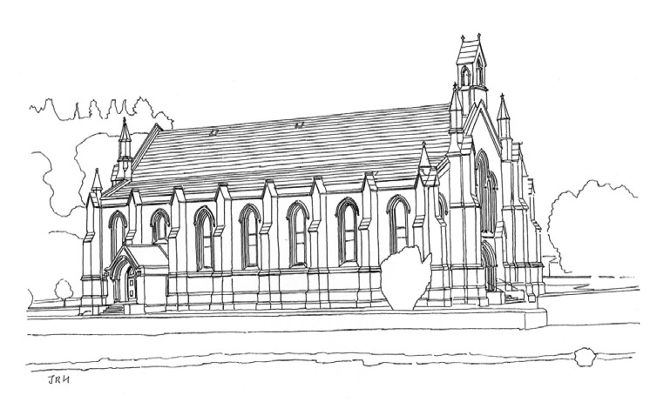‘One of the prettiest landscapes in Scotland’
John R Hume reflects on the parish church of Langholm.
LANGHOLM is a town in Dumfriesshire, north of Carlisle, in one of the river valleys that punctuate the land-mass of the Southern Uplands, that of the river Esk.
At the site of the town the Esk is joined by the Ewes and Wauchope waters. To the east is England, and a road to the north-east leads to the eastern Borders towns of Hawick, Selkirk and Galashiels.
When I first came to know Langholm it seemed to belong with that group of communities rather than to towns further west in Dumfriesshire, like Annan, Dumfries and Lockerbie, with its stone-built textile mills, and its sense of being self-contained, rather than primarily on either an east-west or a north-south route. In the 1890s it was described in Francis Groome’s Ordnance Gazetteer of Scotland as ‘Embosomed in one of the prettiest landscapes in Scotland – neither wide, romantic or grand, but strictly and eminently lovely’. Could one ask for a better tribute?
The boundaries of the parish of Langholm like those of many others, were redrawn after the Reformation, in this case in 1703. As revised they took in the whole of two older parishes, Staplegordon and Wauchope, and about half of a third, the parish of Morton. When I first explored the area in the 1970s I came across a parish church of Half Morton, and could not understand how it came to be so named. The town of Langholm is very attractive, with its riverside setting, and is composed of an old town, founded as a burgh of barony in 1643 and a new town to the west, laid out in 1778 on a triangular plan, and linked to the old town by a three-arch bridge. One of the most celebrated natives of the area, Thomas Telford, born at Westerkirk worked as a mason on this bridge. It has since been widened twice, in the late 19th century and in the early 1990s.
In 1788, according to Groome’s Gazetteer, a cotton-spinning mill was built in the town and ‘an extensive cotton trade with firms in Glasgow and Carlisle was carried on until 1832, when the manufacture of shepherd plaids and shepherd check trousering was introduced, and led to the production of very beautiful and highlyfinished fabrics. The manufacture of tweeds followed, and rose rapidly to such prosperity as now [in the 1890s] to employ six mills.’ At that time the town also had two distilleries and a tannery. When I first knew the town, in the 1980s, tweed manufacture had been supplanted by the making of hosiery, but I understand that the rise of textile production in the Far East has put an end to that industry, as in other Border towns.

This is the context in which the present parish church was built. It is on the west bank of the river Esk, in a beautiful rural setting, and is approached from the new town by an elegant two-span masonry bridge over the Wauchope Water, a feature unique in Scotland. The building was constructed in 1846 for the principal heritor, the Duke of Buccleuch, and was designed by Burn and Bryce of Edinburgh, leading architects of the period. It is the Gothic Revival style, as can be seen in my drawing and has an open hammer-beam roof. The 1846 pulpit survives, but the pews were replaced in the 20th century.
It is now some years since I last visited Langholm, but its ‘strictly and eminently lovely’ setting will not have changed, and its memorable church and bridge will still be well worth seeing.
Not far away are monuments to Thomas Telford, and to another famous native of the area, Christopher Grieve, better known as Hugh MacDiarmid, one of Scotland’s most celebrated poets. It will be well worth your while to seek out Langholm and its parish church.